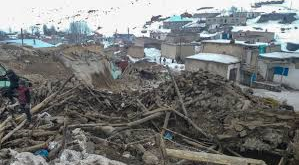Nutrient run-off from agriculture and urban sewage are likely to be to blame, scientists say
The coastal waters of the Baltic have been starved of oxygen to a level unseen in at least 1,500 years largely as a result of modern human activity, scientists say. Nutrient run-off from agriculture and urban sewage are thought to be to blame.
“Dead zones” – areas of sea, typically near the bottom, with a dearth of oxygen – are caused by a rise in nutrients in the water that boosts the growth of algae. When these organisms die and sink to the seafloor, bacteria set to work decomposing them, using up oxygen in the process.
The resulting lack of oxygen not only curtails habitats for creatures that live on the seafloor, but also affects fish stocks and can lead to blooms of toxic cyanobacteria.
But it is not a problem confined to the Baltic. Earlier this year a study revealed that ocean dead zones have quadrupled in size since the 1950s, and are found the world over in coastal regions of high population, from Europe to North America and China.
Researchers behind the latest study say that while nations are taking action to help waters rebound, individuals can help.
“In terms of the general public, one of the main things to do in the future may be to reduce the proportion of meat in the diet. Livestock agriculture generates higher nutrient losses per kilogram of food produced,” said Sami Jokinen, a PhD student at the University of Turku, and Tom Jilbert, an assistant professor of the University of Helsinki, who are co-authors of the research.
At present, the Baltic Sea dead zone extends across 70,000 km2 – an area almost twice the size of Denmark. The team say the lack of oxygen in the waters at the bottom is seasonal, related to layering of the water resulting from summer heating of the surface.
While previous studies have revealed that oxygen depletion has occurred in the central Baltic at various points in time in the past several thousand years, the latest study looks at how oxygen levels have changed in coastal waters.
Writing in the journal Biogeosciences, the team, from Finland and Germany, describe how they probed the issue by removing two four-metre-long cores from a site between the coasts of Sweden and Finland.
The team used a host of measures to analyse one of the cores, including looking at the grain sizes of the sediment layers and ratios of different types of elements. They also used both cores to hunt for trace fossil burrows from organisms that lived in the sediment.
Among the findings, they found clear layers of sediment dating back to just over 100 years, suggesting that animals including bivalves and annelids disappeared from the bottom of the sea from this point.
The upshot was that the researchers were able to reconstruct how oxygen levels at the seafloor have changed over the past 1,500 years, revealing that while the degree of oxygen depletion in coastal areas has varied over the period – largely due to changes in the climate – there has been a marked depletion in the past 100 years or so.
The researchers say they were surprised to find that the steep drop in oxygen levels began before the postwar peak in urbanisation and intensive agriculture in the region in the 1950s. They say a combination of factors is likely to blame, including an uplift of the Baltic area as well as human activity – the latter a factor that appears to have become increasingly important.
“Our evidence of deoxygenation at the beginning of the 20th century suggests that the human influence was felt earlier – in other words, that the system is more sensitive than we thought previously,” Jokinen and Jilbert told the Guardian.
The pair note that since 2007, coastal nations around the Baltic Sea have attempted to improve the situation with an action plan to reduce nutrients flowing into the waters, and that oxygen levels are on the rise in waters off Stockholm. But, they add, global warming might be hindering progress, with no evidence of recovery seen in the regions examined.
“It is likely delaying the recovery process, because oxygen dissolves less easily in warm water,” they said.
Callum Roberts, professor of marine conservation at the University of York, who was not involved in the research, welcomed the study.
“Its great strengths are the fine-scale resolution of the timing of changes in conditions, and its ability to take us back all the way to Europe in the dark ages, long before the industrial revolution and modern population growth,” he said. “By doing so, the researchers can separate human from environmental forces shaping the Baltic, to show that Baltic dead zones are the responsibility of those who live along its shores.”
But, he said, the study also raised concerns.
“One troubling finding is that recent efforts to reduce pollution have not yet led to recovery,” said Roberts. “The Baltic is stuck in a vicious cycle in which low oxygen at the seabed releases nutrients trapped in bottom sediments to fuel yet more plankton bloom and bust that causes the dead zones to get bigger.”
The Guardian
 Lebanese Ministry of Information
Lebanese Ministry of Information



